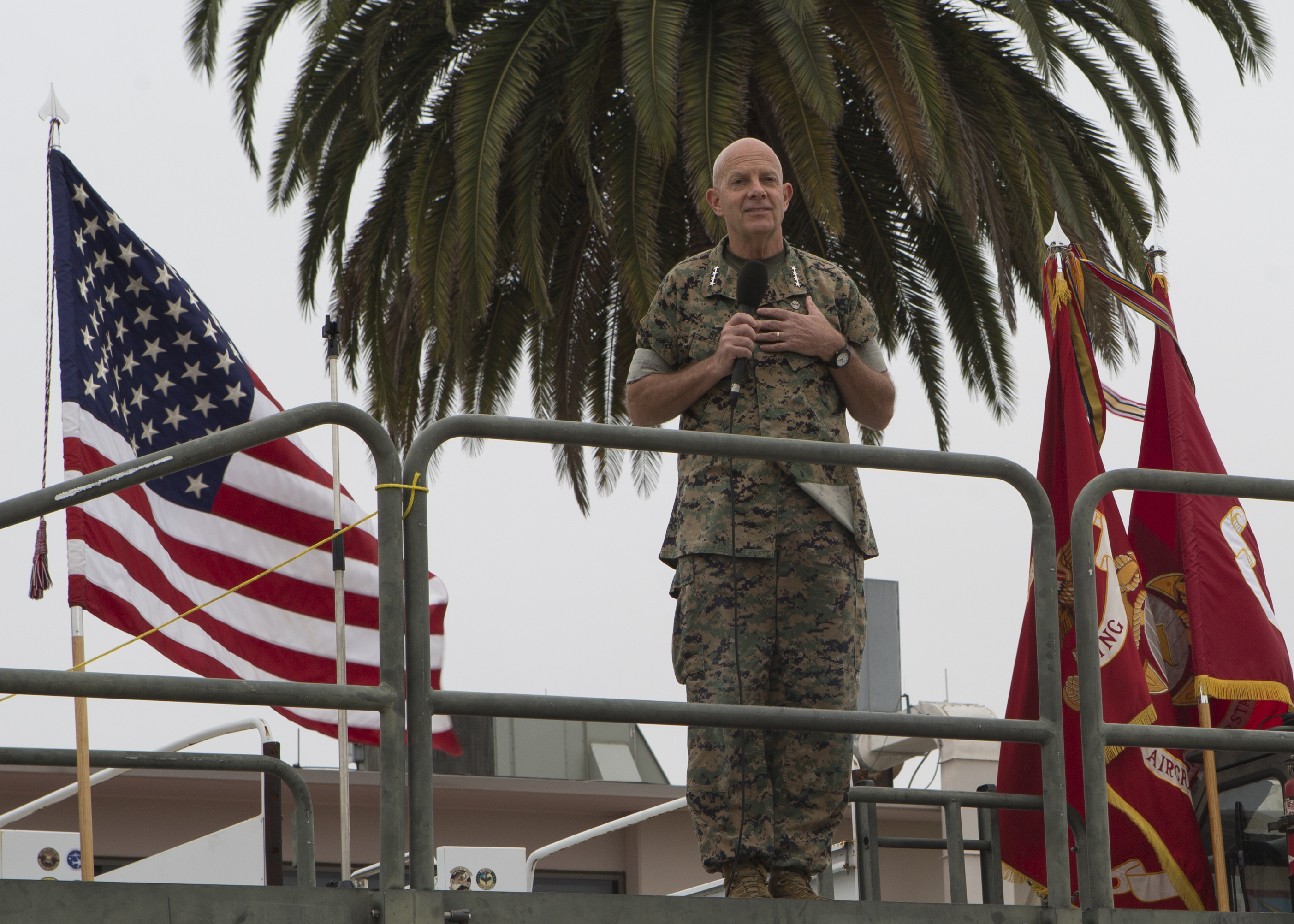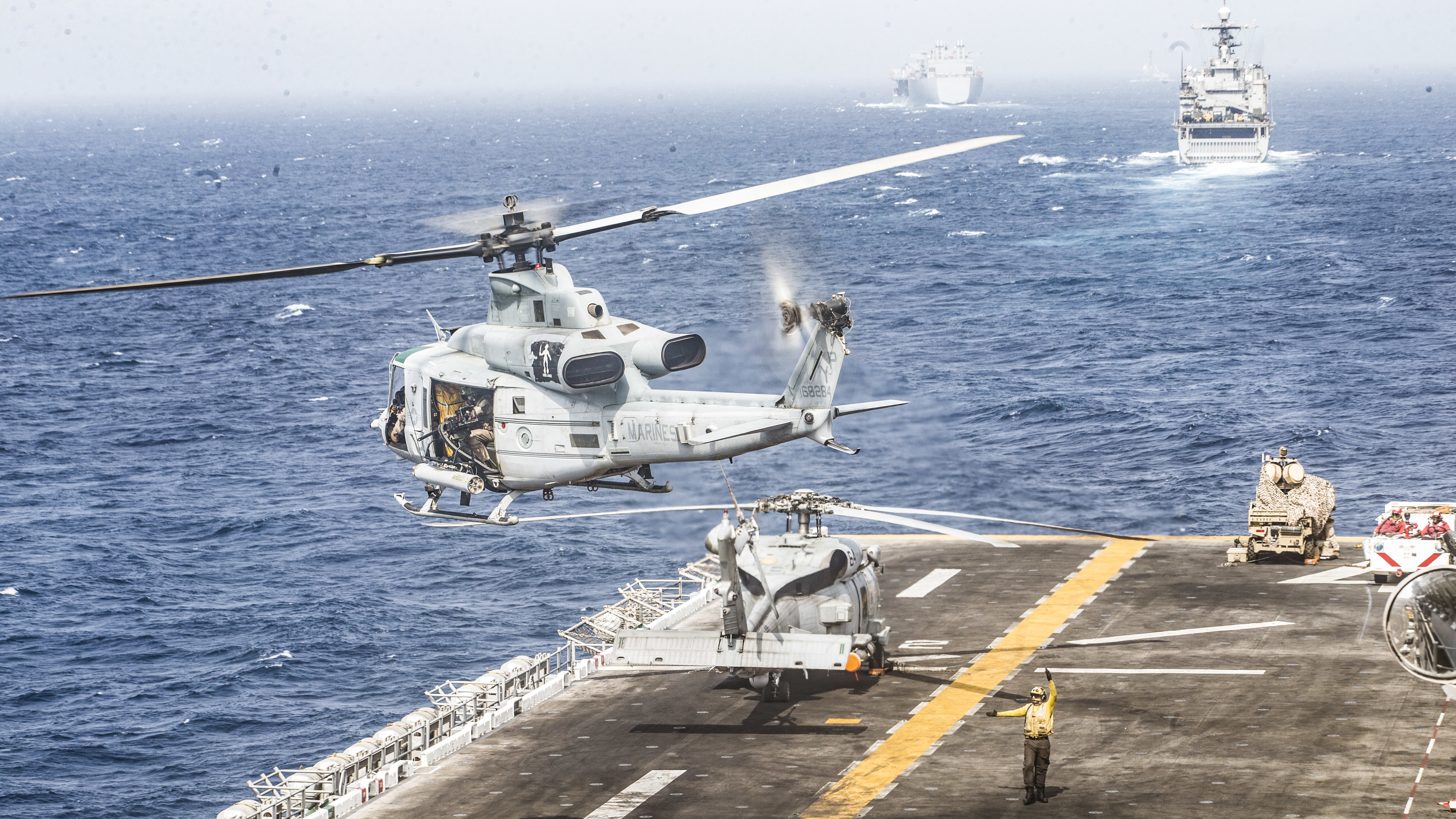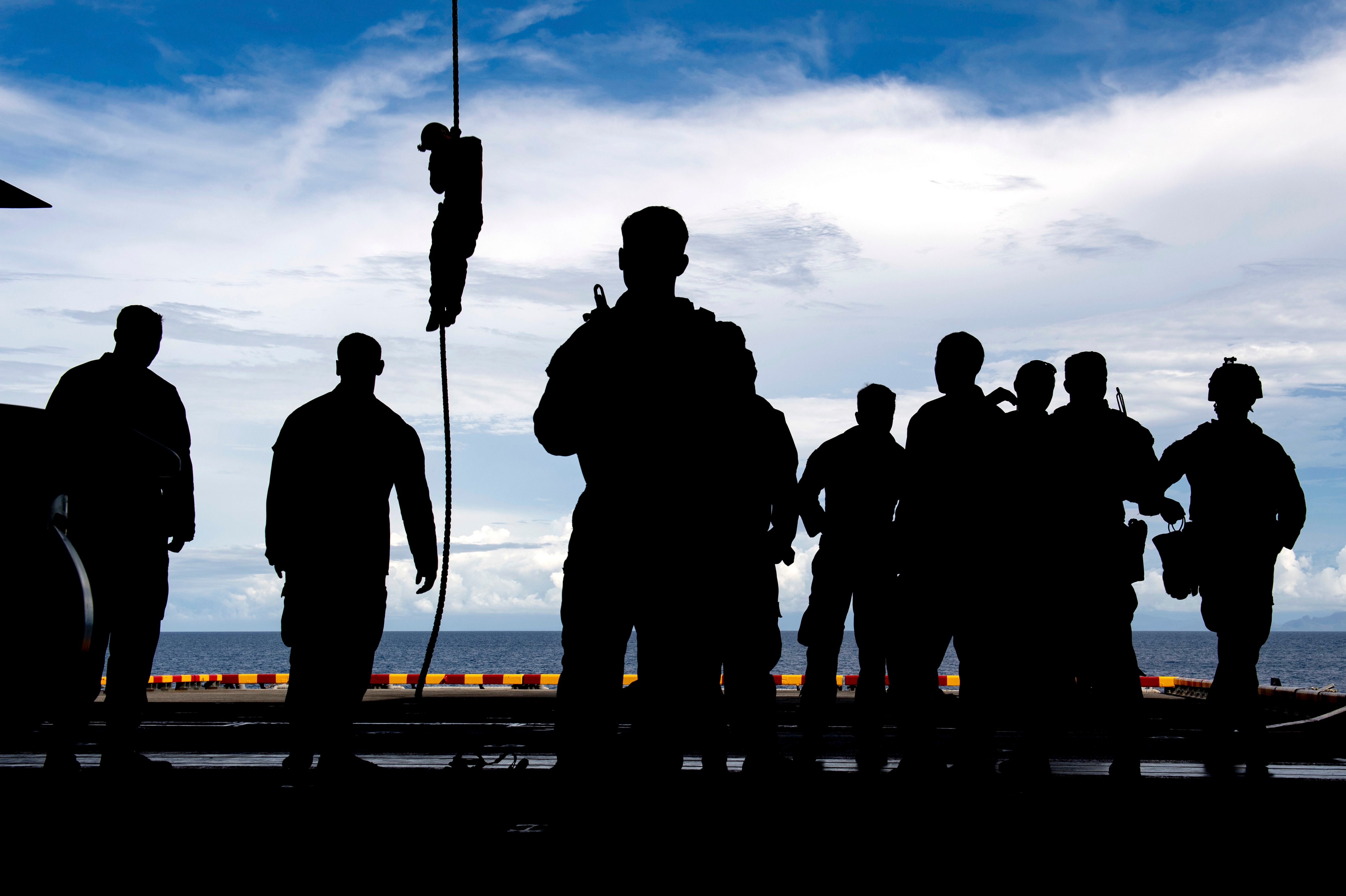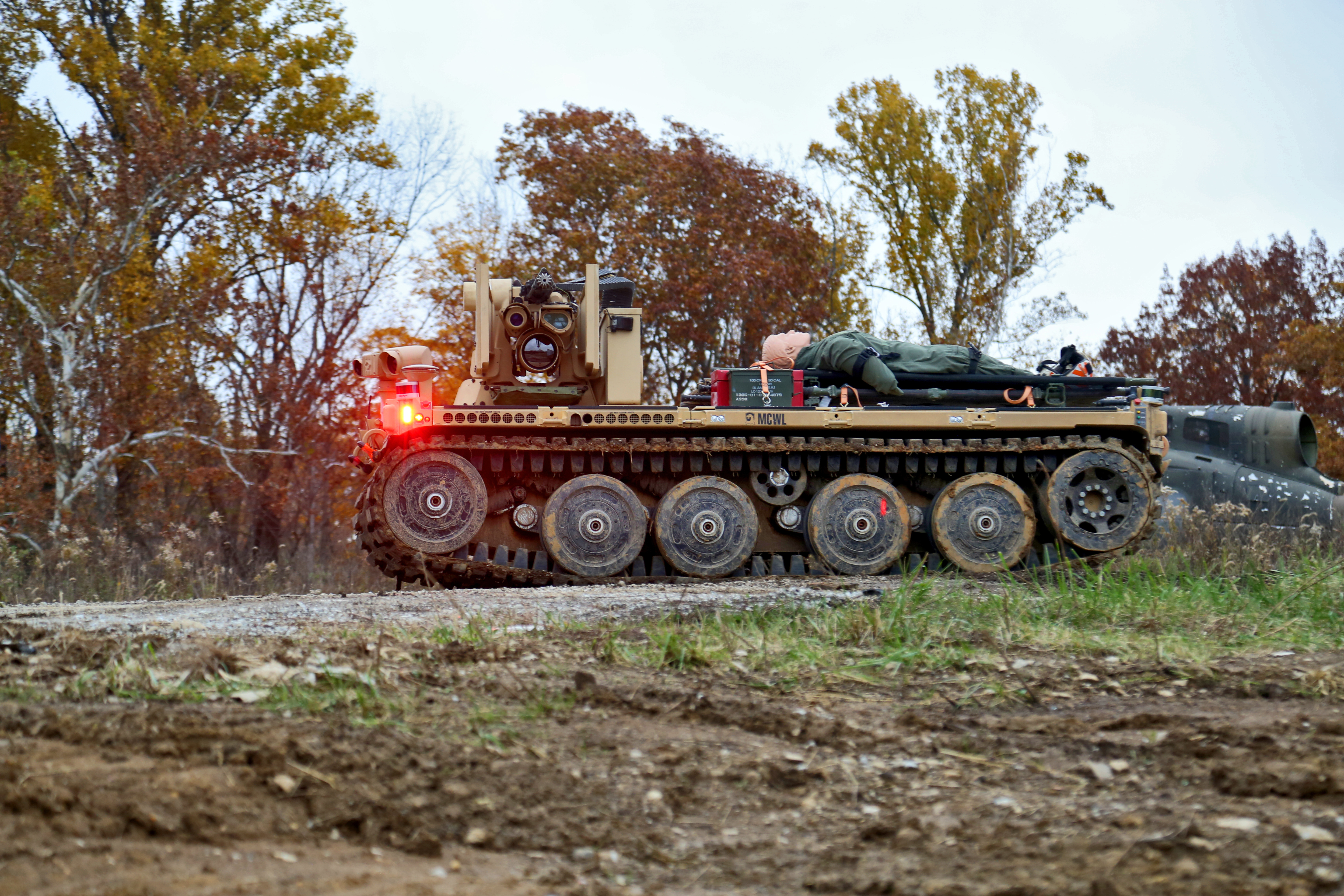
WASHINGTON, D.C. – The Marine Corps is nearly done drawing out what its 2030 force will look like, and the service will spend the next month or so doing a significant amount of modeling and simulation to ensure they’ve got it right, the commandant said.
In his first major public speech since taking over the service this summer, Gen. David Berger spoke at the Heritage Foundation on Thursday about his Commandant’s Planning Guidance and how he intends to begin implementing the vision laid out in that document.
Berger said the timing is such that the Fiscal Year 2021 budget request, which has already been sent from the services to the secretary of defense for review, wasn’t able to be fully shaped by this new course for the Marine Corps.
“You’ll probably see some changes along the lines of what I’m referring to today, but because of where we are in the budget cycle I think it’ll be the following year and the year after that where you’ll see the bulk of them,” he said.
Though Berger couldn’t describe the future force in full detail, he said “force design is my top priority. I think that is my principle vehicle for redesigning, realigning the Marine Corps as part of a naval expeditionary force, which is part of the joint force.”
To that end, he described three driving principles of the future force: it will be an integrated naval force, it will be a stand-in force and it will be a distributed force.
Though the Marine Corps has been wrapped up in ground wars for the past two decades, Berger said an ongoing consideration must now be, “what can Marines do to help the fleet commander fight his fleet? How does that contribute towards a joint fight? That could mean Marines ashore or afloat with longer-range anti-ship missiles; you could visualize them as an extension of the fleet’s magazine, basically, augmenting in other words air and ship-based fires.”
He said Marines could also strap their weapons to ship decks, much like when a Marine Corps electronic warfare system helped shoot down an Iranian drone in the Persian Gulf earlier this year from the deck of USS Boxer (LHD-4). And, he said, the expeditionary advance bases and forward arming and refueling points the Marines are working to regain proficiency in setting up and operating from would not just be used to support Marine Corps operations, but could provide refueling or intelligence-gathering services to the joint fight and could also leverage specific Army or Air Force niche capabilities as needed for a mission.

With China being the key threat he referred to throughout the speech, and nodding to growing Chinese capabilities and ranges, Berger said being a stand-in force in the Pacific would be necessary despite its risks.
Though sea control and air control won’t be a given now or in the future, “we need to persist, we need the force to remain inside the surveillance range, inside the weapons range, of an adversary. Inside that envelop.” Berger said it was too hard to do effective domain awareness and sensing from outside that envelop, and it was less effective to deter adversaries or reassure allies from a distance.
As for the need to operate in a dispersed fashion, the commandant said, “I am absolutely embracing Distributed Maritime Operations as a naval concept. We must distribute the force for two reasons: one is because, in a peer-to-peer fight, what you do not want to do is drive down into the heart of their collection of weapon systems in a narrow funnel; you want to distribute your force so that you pose an adversary a dilemma from multiple axes in multiple domains. The byproduct of dispersing, of distributing, is you also become more survivable, more difficult to detect.”
After several months of planning, the notional 2030 Marine Corps force design is being put to the test.
“We have right now I think an 80, 85 percent picture of what the Marine Corps will need a decade out. But this last step is so important because now is when we run that force against a peer threat 10 years out over and over and over again to develop an analytical base that’s the foundation, in my opinion, we need to justify that force,” he said.
“I believe in experimentation. I believe in the analytics as a foundation. We’re at that stage now where we’re testing the force that we think we will need. And that will all conclude in another month or two.”
He later added that the joint force has a model of what a peer adversary in 2030 might look like, and so that threat was put into the simulator. A couple variables at a time change during each run, and the notional 2030 Marine Corps force is tested over and over again in slightly different environments and threat sets to ensure the Marine Corps is set down the right path.
Though details remain to be finalized and explained to the joint force and Congress, what Berger has shared through his Commandant’s Planning Guidance was well received and widely regarded as having the potential to bring about a generational change for the Marine Corps.
Asked by event host Dakota Wood of the Heritage Foundation why this effort would succeed even though many of the ideas have been pitched in the Marine Corps before, Berger said China as an existential threat and a pacing threat will force the change. Since the end of the Cold War, he explained, the military pursued new capabilities simply to push forward technology, and the pace was dictated by resources and willpower. Now, he said, China’s rapid military advancement in recent years means the Defense Department needs to act differently.

Whereas previous technology and capability roadmaps looked forward at where they could go, Berger said he specifically started with what force the Marine Corps will need to defeat China in 2030, and then he worked his way backwards to today to figure out what acquisition, training and personnel steps need to occur when to meet the 2030 force goals.
Having such a “threat-based force design” is new to this generation of the Marine Corps.
Berger said that setting the pace – in military development as in a running race – requires more effort to break new ground, and more money in the case of a military race.
“In my opinion, in the last several years to some degree we have let an adversary set that pace,” with the U.S. not dedicating the resources to being the pace-setter. Now, he said, big changes are needed.
“I do not believe that the annual pace of just force development, that grind, will not achieve what we have to do; there will be an ever-widening gap if we do so. We have to do force design, and we have to change our posture around the world. In other words, I am not content – we should not be content – to merely try to keep up. We should set the pace.”
As an example, he talked about the development and fielding of unmanned systems.

Though the Navy has some experience in unmanned vehicles in the air, surface and undersea, he said the development hasn’t been as fast as it needs to be in the next couple years.
“There wasn’t an accelerator; there wasn’t a driver,” he noted.
“The initial driver was, don’t put a human being in there if we can put a machine in. In other words, lower the risk to the human. Now, the additive part of unmanned is, how can you make your force look bigger, operate bigger with unmanned and manned teaming? How can my wingman or two of them be unmanned? And how does that enable me to actually accomplish a mission in a better way? I think initially it was in places like explosive ordnance disposal … but now it’s more like, even offensively, how can I move from ship to shore in a way that I can look at multiple sites, go deeper, have longer endurance with unmanned systems?”
He suggested that aggressive goals for fielding unmanned systems would be coming soon – even though they may not be possible to meet, they will serve as a forcing function for program offices and budget offices to focus on getting the systems in the field with urgency.
“We need to drive unmanned systems from the top down. This system is built to resist that; it’s built from a program management perspective to defend manned programs, manned platforms, so I think we have to mandate a very aggressive pace in fielding unmanned systems,” he said.
He also noted expeditionary ships, commercial ships and other alternative platforms would have a place in future operations to supplement traditional amphibious warships.
“What I know will not work is a few dozen gray-hull L-class ships by themselves. They will be targets. We need them, but we need much more than just that,” he said.
“We have to be much more creative in how we use for example E-class ships, which for a while, frankly, we were standoffish from because we felt perhaps they would threaten the amphibious shipbuilding plan. Don’t talk about them because then we wont get enough amphib ships. I’m in another place now where we need all of them. And we need to really think creatively about how we embark forces and systems on platforms that are not necessarily an LPD-17 or a Flight II or an LHA/LHD. If they’re floating, we need to figure out how to use it.”
Ultimately, though it will mean developing new systems and refocusing the force on a new way to fight, Berger said he’s all-in in setting the Marine Corps down a new path.
“The game plan is all about imposing cost” on an adversary, such that they decide a fight with the U.S. isn’t worth it today.





